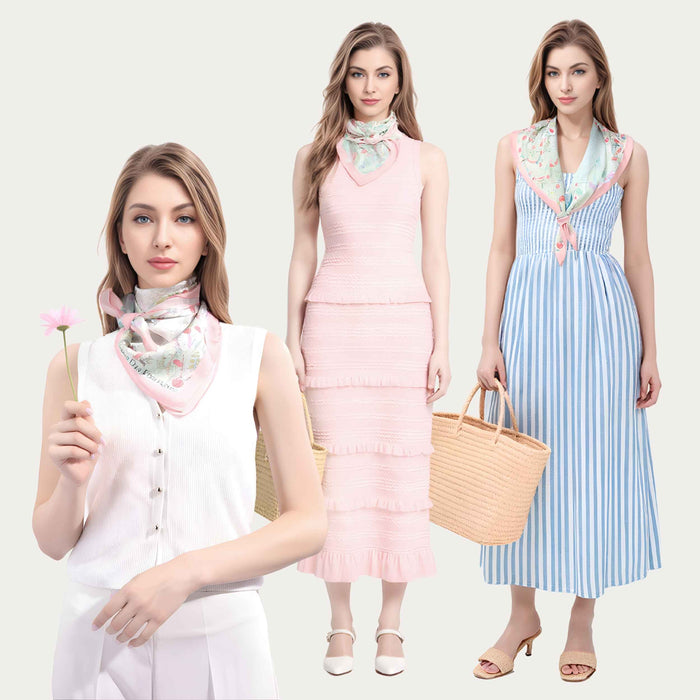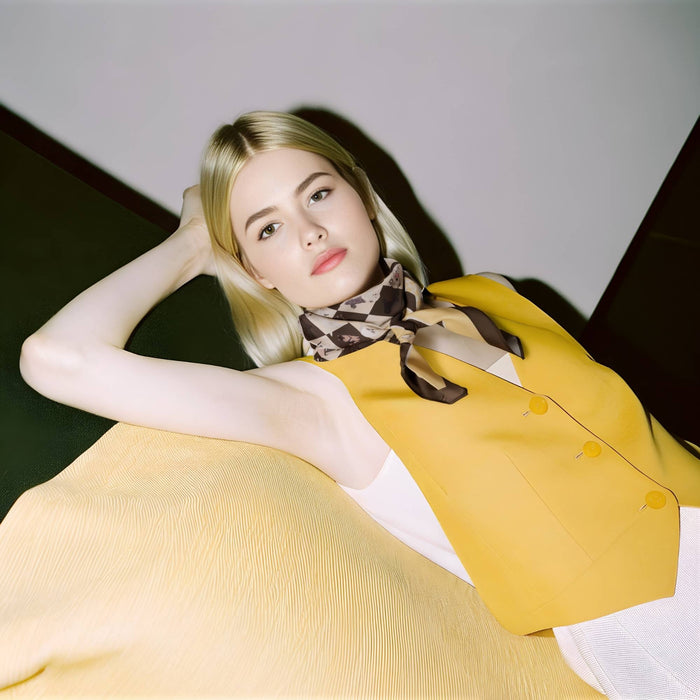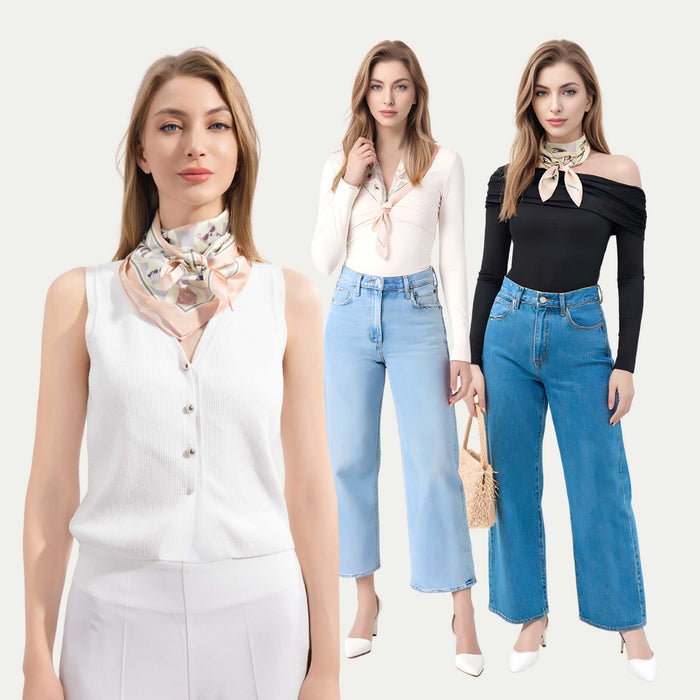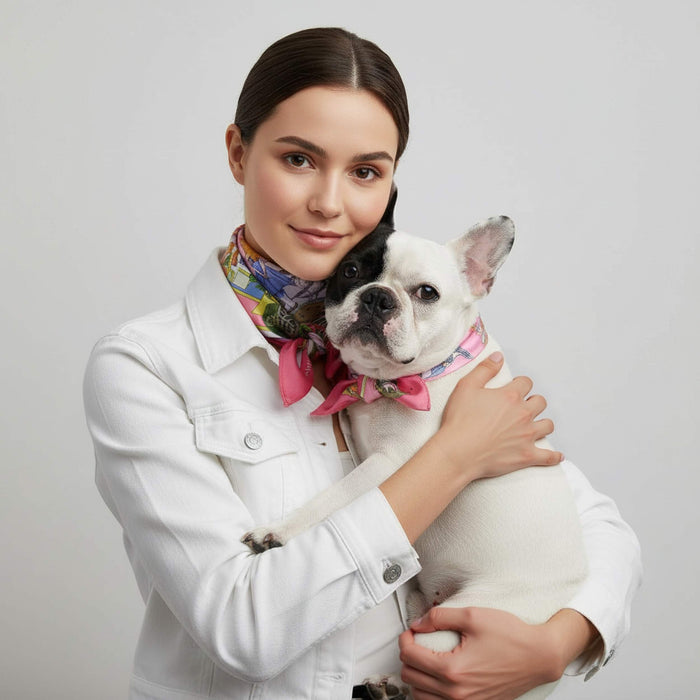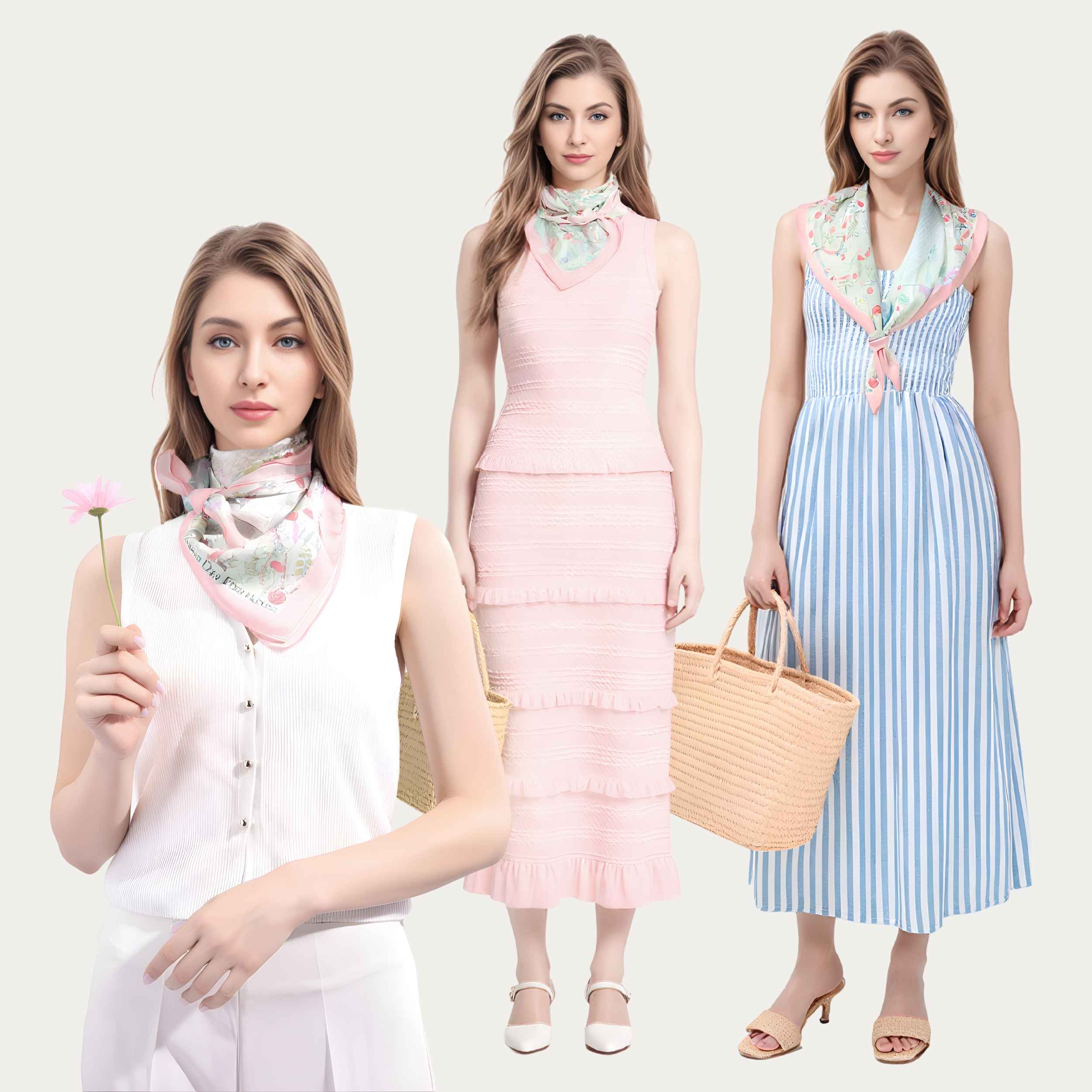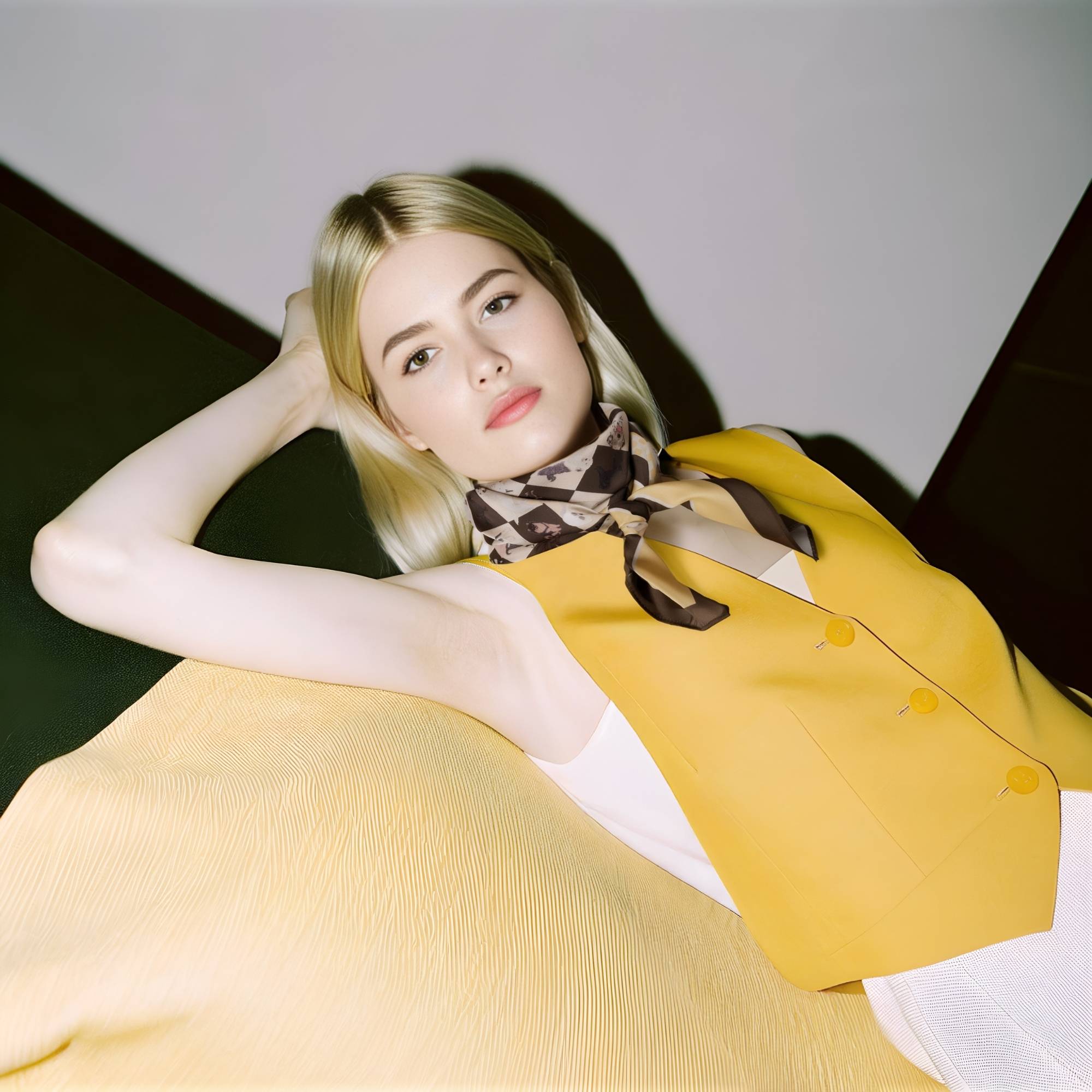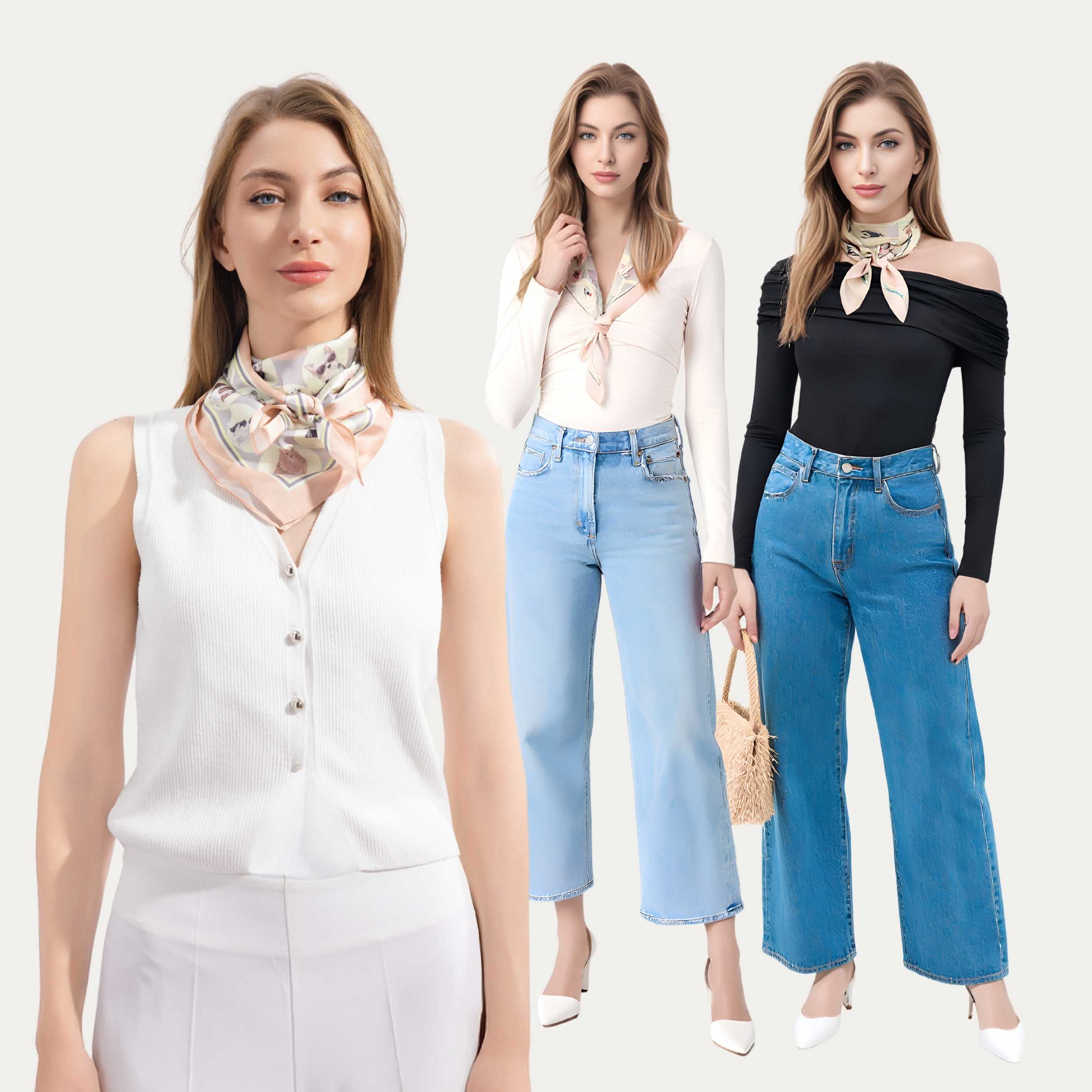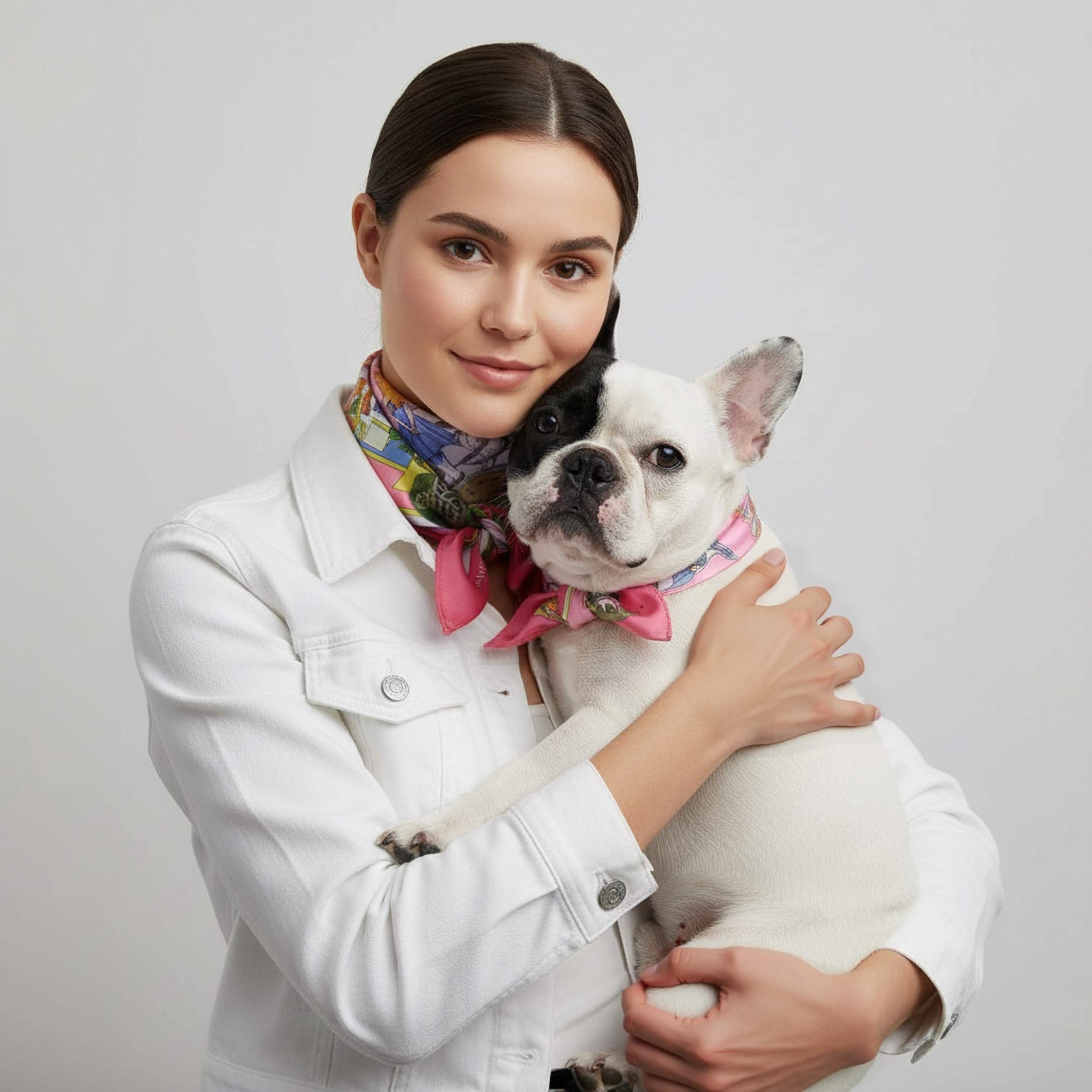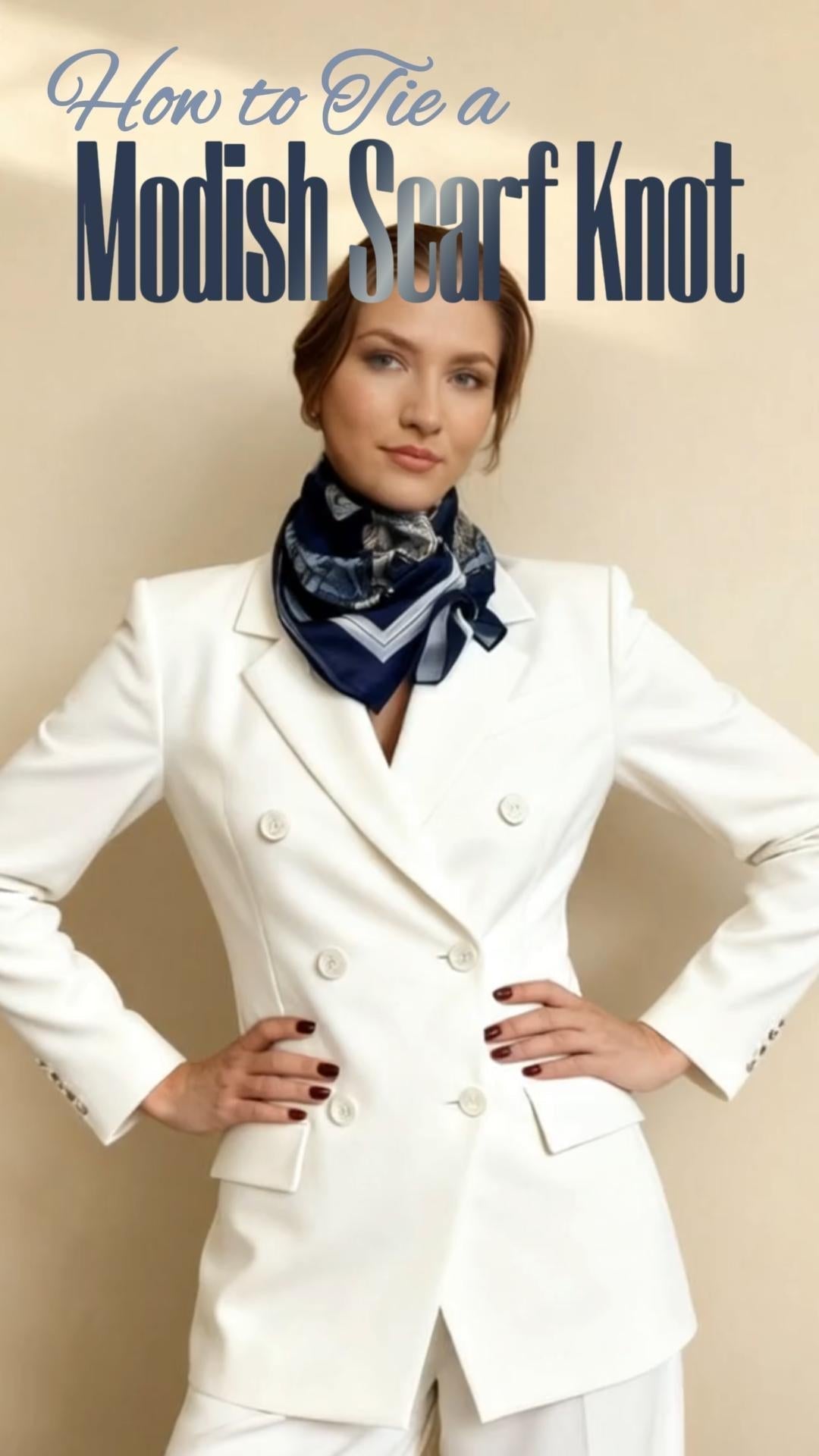
The Timeless Elegance of Scarves: A Journey Through History to Iconic Business Travel
Share
Travel Like the Icons: Effortless Business Trips with Minimal Luggage and Maximum Scarves
At JARDIN DES FONTAINES, we’re passionate about weaving sustainability and style into every scarf, inspired by the “light packing philosophy” of global icons like Audrey Hepburn, Gigi Hadid, and Dr. Deborah Birx. Our recycled material scarves are your go-to for elevating business trips with minimal luggage and maximum versatility.
We’ll take you on a journey through the rich history and evolution of scarves—from ancient utility to modern eco-chic accessory—and show how today’s influencers rely on them for effortless travel. Learn how scarves became a timeless staple and why they’re essential for your professional wardrobe.
The Ancient Roots of Scarves (3000 BCE–Middle Ages)
Scarves weren’t always a fashion statement; they started as practical essentials. Around 3000 BCE, Ancient Egyptian elites, like Queen Nefertiti, used linen scarves to shield from the desert sun or signify status, with intricate head wraps marking royalty. By 1000 BCE, Chinese warriors in Emperor Qin Shi Huang’s terracotta army wore silk neck cloths for warmth and rank—early proof of scarves’ dual role in function and prestige. In Ancient Rome (circa 10 CE), men used “sudaria” to wipe sweat during gladiator events, while women draped “palla” shawls for modesty and elegance. By the Middle Ages, European knights tucked scarves under armor to prevent chafing, and noblewomen adorned headscarves or veils to signal wealth, making scarves a versatile symbol of utility and status.
Renaissance to 19th Century: Scarves as Luxury
The Renaissance (14th–17th centuries) elevated scarves to high fashion. European aristocrats flaunted silk and lace shawls with intricate embroidery, often imported from Asia, to showcase wealth. By the 1800s, the Industrial Revolution democratized textiles, making scarves accessible beyond the elite. Indian cashmere shawls became a Victorian obsession, often pricier than gowns, symbolizing refined taste. Men embraced cravats—fancy neck scarves—with figures like Napoleon reportedly owning hundreds, cementing scarves as a mark of sophistication.
20th Century: Scarves Enter Pop Culture
The 20th century saw scarves become cultural icons. In the 1920s, flappers tied silk scarves as headbands for Jazz Age flair. In 1937, Hermès launched its iconic square scarf, inspired by equestrian motifs, which Jackie Kennedy later popularized as a travel staple for “infinite possibilities” through head wraps or belts. Audrey Hepburn, another scarf devotee, declared: “When I wear a silk scarf I feel so definitely like a woman, a beautiful woman,” . The ‘60s and ‘70s saw hippies and rockstars like Jimi Hendrix embrace bandanas as rebellious symbols, tied on heads or bags.
21st Century: Scarves as Modern Travel Essentials
Today, scarves are a cornerstone of sustainable, minimalist travel, especially for business professionals. Dr. Deborah Birx used over 100 scarves during her 2020 press tours, noting in a 2019 podcast that they help her pack light for work trips, refreshing basic outfits effortlessly. Zimbabwe’s President Emmerson Mnangagwa wears his flag-colored scarf at summits, saying its absence once was notable: “I have just come from my rural area. That’s why I don’t have my scarf,” highlighting its role as an essential identity marker.
New York Senate Majority Leader Andrea Stewart-Cousins relies on custom scarves, stating: “It occurred to me that a scarf would be a great way for me to distinguish myself,” making them vital for professional distinction. Supermodel Lily Aldridge uses scarves for comfort: “[I bring] really comfortable scarves because I like to get cosy on the plane,” ideal for fashion week travel. Gigi Hadid calls oversized scarves her “#1 travel essential” for flights and events. Historian Bettany Hughes collects scarves globally, advising: “Wherever I’ve traveled in the world, I will always buy a scarf... they’re a sunshade, they can wipe sweat, they can keep you warm,” emphasizing their utility in light packing.
Scarves have evolved from functional cloths to symbols of status, rebellion, and now sustainability. Their ability to transform outfits—whether as head wraps, belts, or shawls—makes them indispensable for modern business travelers seeking style without excess.
Top 13 Scarf Tying Techniques for Business Travel
Here are most popular techniques to style our Jardin des Fontaines scarves, inspired by these icons’ love for versatility and minimal packing. Each method is perfect for professional settings, ensuring you stay chic and sustainable.
1. The Parisian Knot (Inspired by Jackie Kennedy)
How-To: Fold a square scarf into a triangle, roll into a thin band, and wrap around your neck. Cross the ends at the front, pull one end through the loop created, and tighten into a structured knot, letting the tails drape elegantly.
Why It Works: This chic, tailored knot channels Kennedy’s European sophistication, ideal for boardroom presentations or upscale networking events. Our vibrant silk prints add a modern twist.
Travel Tip: Compact and polished, it’s a lightweight way to elevate a blouse or dress, keeping your suitcase minimal.
2. The Asymmetrical Wrap (Inspired by Audrey Hepburn)
How-To: Drape a large rectangular scarf over one shoulder, letting one end hang longer. Loop the longer end around your neck once, then tuck it loosely under the shorter end to create an off-center, flowing effect. Secure with a small pin if needed.
Why It Works: Hepburn’s feminine elegance shines in this drapey, dynamic style, perfect for evening events or creative meetings. It exudes confidence, as she described.
Travel Tip: Doubles as a shawl for chilly flights, aligning with Aldridge’s cozy travel vibe.
3. The Structured Bow (Inspired by Andrea Stewart-Cousins)
How-To: Fold a square scarf into a band, wrap around your neck, and tie into a large, symmetrical bow at the front or slightly to the side. Fluff the bow for volume and tuck the ends for a clean finish.
Why It Works: This bold, distinctive look mirrors Stewart-Cousins’ signature style, making a statement at high-stake meetings or panels while keeping your outfit simple.
Travel Tip: The bow can be untied to use as a headscarf or belt, maximizing versatility without extra packing.
4. The Halter Top (Inspired by Lily Aldridge)
How-To: Take a large square scarf, fold into a triangle, and tie the two top corners behind your neck. Twist the bottom point and tie around your waist to form a chic halter top. Pair with trousers for a professional edge.
Why It Works: Aldridge’s versatile sarong-inspired approach makes this ideal for warm climates or casual business dinners, turning one scarf into a complete outfit.
Travel Tip: Reverts to a scarf for plane comfort, as Hadid and Aldridge advocate.
5. The Layered Cascade (Inspired by Deborah Birx)
How-To: Drape a long rectangular scarf over your shoulders, letting one end hang longer. Loop the longer end around your neck twice, then pull it through the loop created to form a cascading, multi-layered effect. Adjust for a relaxed or structured look.
Why It Works: Birx’s daily scarf reinventions inspire this polished yet effortless style, perfect for transitioning from meetings to dinners while maintaining a professional edge.
Travel Tip: Use as a sunshade or wrap, as Hughes suggests, for multifunctional travel.
6. The Belted Cape (Inspired by Gigi Hadid)
How-To: Drape a large scarf over your shoulders like a cape, then cinch at the waist with a belt over the scarf to create a tailored silhouette. Let the ends flow for drama.
Why It Works: Hadid’s oversized scarf-as-blanket vibe transforms into a bold, professional look for conferences or creative pitches, adding flair to minimal outfits.
Travel Tip: Unbelt to use as a flight blanket, keeping you cozy and chic.
7. The Cultural Twist (Inspired by Bettany Hughes)
How-To: Fold a square scarf into a triangle, wrap around your head with the point at the forehead, and twist the ends into a rope-like braid. Tuck the braid under or pin at the side for a turban-style look.
Why It Works: Hughes’ love for local scarves inspires this globally inspired, professional headwrap, ideal for cultural visits or unique business settings.
Travel Tip: Protects hair and doubles as a cultural memento, as Hughes recommends.
8. The Classic Drape (Inspired by Deborah Birx)
How-To: Drape a rectangular scarf over your shoulders over a blouse or blazer, letting the ends hang naturally or tucking them for a sleek look.
Why It Works: Perfect for meetings or dinners, this adds sophistication without bulk, echoing Birx’s polished press tour looks. Use our vibrant prints for a pop of personality.
Travel Tip: Doubles as a shawl for chilly flights, keeping you cozy like Aldridge prefers.
9. The Neck Knot (Inspired by Andrea Stewart-Cousins)
How-To: Fold a square scarf into a triangle, roll it into a band, wrap around your neck, and tie a loose knot at the front or side.
Why It Works: This signature style mirrors Stewart-Cousins’ distinctive look, elevating a simple dress or suit for boardroom confidence.
Travel Tip: Compact and easy to pack, it’s a quick way to refresh your outfit between meetings.
10. The Head Wrap (Inspired by Jackie Kennedy)
How-To: Fold a square scarf into a triangle, place over your head with the point at the back, and tie the ends under your chin or at the nape.
Why It Works: Channel Kennedy’s timeless elegance for airport chic or cultural visits during business trips. Our lightweight silk prevents overheating.
Travel Tip: Protects hair from wind or sun, as Hughes suggests for global adventures.
11. The Belted Accent (Inspired by Audrey Hepburn)
How-To: Roll a square scarf into a thin band, thread through the belt loops of trousers or a skirt, and tie in a bow or knot.
Why It Works: Hepburn’s feminine touch transforms basic outfits into polished looks, ideal for presentations or networking events.
Travel Tip: Replaces bulky accessories, keeping your suitcase light.
12. The Bag Charm (Inspired by Gigi Hadid)
How-To: Tie a small scarf around the handle of your tote or briefcase, letting it dangle or knotting securely.
Why It Works: Adds a chic touch to professional bags, aligning with Hadid’s stylish yet practical travel vibe.
Travel Tip: Easily removable to use as a neck scarf or wrist wrap for instant outfit updates.
13. The Shawl Wrap (Inspired by Bettany Hughes)
How-To: Drape a large scarf over one shoulder and secure with a brooch or tuck under your arm for an asymmetrical look.
Why It Works: Hughes’ cultural memento style is ideal for evening events or cooler climates, offering warmth and elegance.
Travel Tip: Multifunctional as a sunshade or emergency wrap, as Hughes advises.
Why JARDIN DES FONTAINES Scarves?
Our scarves, crafted from recycled material, embody this rich history while prioritizing eco-conscious travel. With 10+ styling options (neck tie, top, bag charm), they let you pack light, stay polished, and reduce your environmental footprint. Perfect for conferences or client meetings, they’re the sustainable choice for today’s professional.
*Disclaimer: This content is purely for fashion inspiration and not an official endorsement by any celebrities mentioned.*

